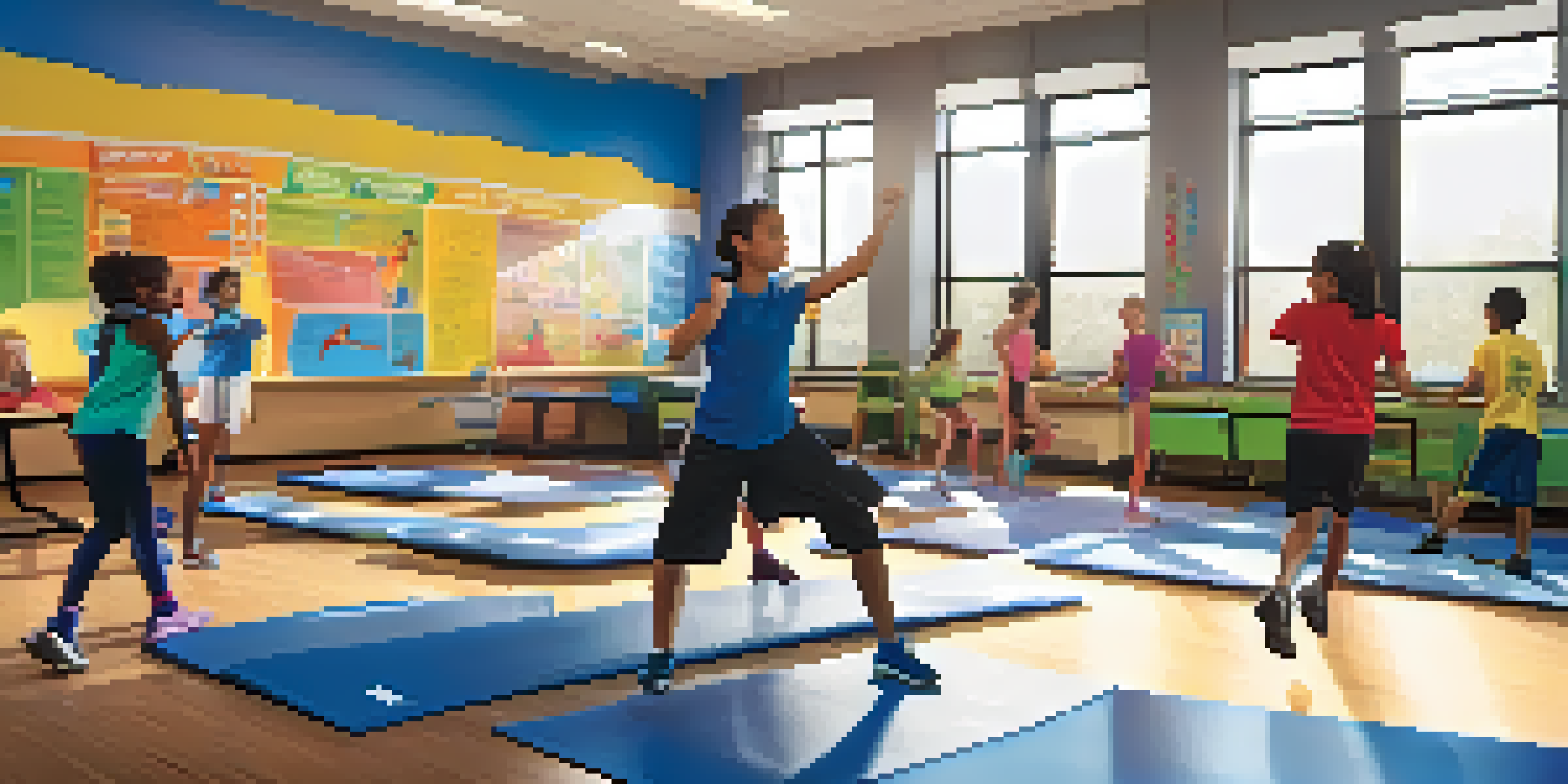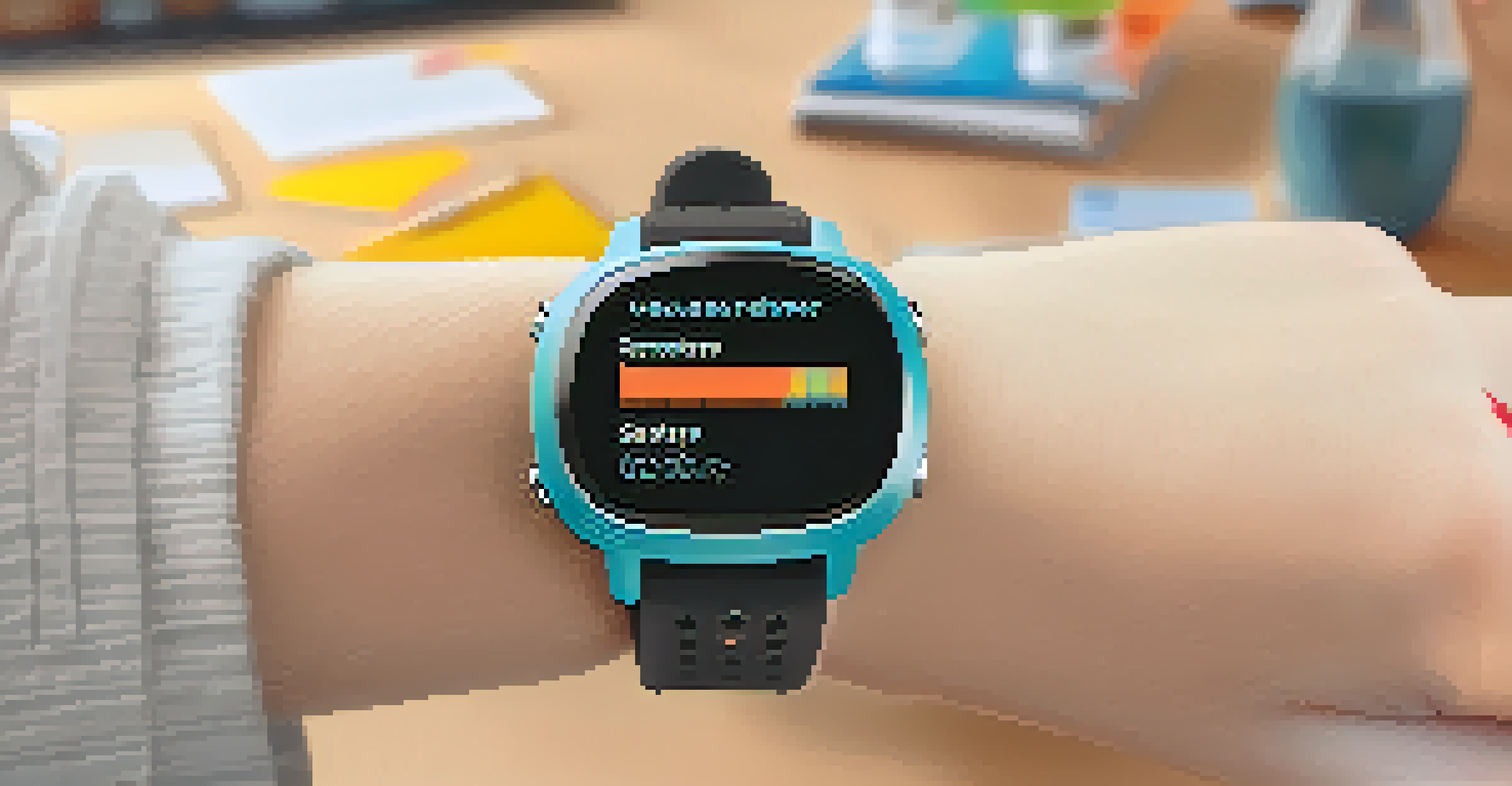Integrating Physical Education and Health Science Curriculum

The Importance of Integrating Physical Education and Health Science
Integrating physical education and health science is essential for fostering a holistic understanding of well-being among students. With rising concerns about childhood obesity and mental health, this integration can provide a comprehensive approach to health education. It encourages students to not only engage in physical activities but also understand the science behind them, creating a more informed generation.
Physical fitness is not only one of the most important keys to a healthy body, it is the basis of dynamic and creative intellectual activity.
By merging these two disciplines, educators can reinforce the concepts of fitness, nutrition, and overall health. For instance, while learning about the benefits of cardiovascular exercise in physical education class, students can simultaneously explore how it affects heart health in their health science lessons. This creates a seamless connection between the theory and practice of healthy living.
Ultimately, this integration promotes lifelong healthy habits. Students who understand the 'why' behind physical activity are more likely to embrace it as part of their daily routine. This solid foundation can lead to healthier choices well into adulthood.
Curriculum Design: Key Considerations for Integration
When designing a curriculum that integrates physical education and health science, several key considerations should be made. First, educators must align learning objectives across both disciplines to ensure that students gain a coherent understanding of health and fitness. This could involve collaborating during lesson planning to identify overlapping themes.

Additionally, incorporating hands-on activities can enhance student engagement. For example, students could conduct experiments on the body's response to exercise, which ties in both physical activity and biological science. Such interactive learning not only solidifies understanding but also makes the learning process enjoyable.
Holistic Health Education Matters
Integrating physical education and health science fosters a well-rounded understanding of health and wellness among students.
Lastly, assessment strategies should reflect the integrated approach. Instead of separate tests for physical education and health science, consider project-based assessments that evaluate students’ understanding of both areas. This encourages students to think critically about how their physical activities impact their overall health.
Collaborative Teaching: Bridging the Gap Between Disciplines
Collaborative teaching is a powerful strategy for integrating physical education and health science. By allowing physical education teachers and health educators to work together, they can create a more enriched learning environment. This teamwork fosters a culture of shared knowledge that benefits students.
The greatest wealth is health.
For example, joint workshops can be organized where both teachers discuss the importance of nutrition and exercise. This not only provides a platform for students to ask questions but also encourages them to engage in discussions that link both subjects. Such collaboration can lead to innovative lesson plans that captivate students' interests.
Moreover, sharing resources, such as guest speakers or community health events, can enhance student learning further. When students see professionals from both fields working together, it reinforces the idea that health is multifaceted and interconnected.
Engaging Students Through Practical Experiences
One of the most effective ways to engage students in an integrated curriculum is through practical experiences. Field trips to local health facilities or fitness centers can provide real-world contexts for the lessons learned in the classroom. These experiences make learning tangible and relatable.
Additionally, organizing health fairs or sports events can encourage student participation while reinforcing the curriculum. During these events, students can showcase their knowledge by leading activities or presenting health-related projects. This hands-on approach not only solidifies their understanding but also fosters teamwork and leadership skills.
Engaging Learning Through Collaboration
Collaborative teaching between physical education and health educators enhances student engagement and understanding.
Lastly, involving parents and the community can amplify these experiences. When students bring home what they learn in school, it creates a ripple effect that encourages healthier lifestyles beyond the classroom.
Utilizing Technology to Enhance Learning
In today's digital age, technology plays an integral role in education, including the integration of physical education and health science. Tools like fitness tracking apps, health-related games, and online platforms can provide students with interactive and engaging ways to learn. This tech-savvy approach caters to different learning styles and keeps students motivated.
For instance, wearable fitness trackers can help students monitor their physical activities while also learning about the physiological effects of exercise. This real-time feedback can motivate them to set and achieve personal health goals, reinforcing the lessons learned in both subjects.
Moreover, online resources can offer a wealth of information that complements classroom learning. Students can explore health topics at their own pace, allowing for deeper understanding and personal interest in their health journey.
Assessment Strategies for Integrated Learning
Effective assessment is crucial in gauging the success of an integrated curriculum. Traditional testing methods may not adequately reflect students' understanding of both physical education and health science. Therefore, adopting a variety of assessment strategies can provide a more comprehensive picture of student learning.
Portfolio assessments, for example, allow students to showcase their work and reflect on their learning journey. This could include a combination of fitness logs, nutritional diaries, and project presentations. Such assessments encourage students to take ownership of their learning while highlighting the connection between physical activity and health.
Technology Enhances Health Learning
Utilizing technology, such as fitness apps and online resources, makes health education interactive and accessible for students.
Additionally, peer assessments can foster collaboration and critical thinking. When students evaluate each other's work, they engage in meaningful discussions that reinforce their understanding and appreciation of both subjects.
The Future of Integrated Physical Education and Health Science
As we look to the future, the integration of physical education and health science will likely continue to evolve. With ongoing research revealing more about the benefits of physical activity on mental and physical health, educational institutions are recognizing the need for comprehensive health education. This shift could lead to more standardized integration in school curricula.
Moreover, as society becomes increasingly health-conscious, schools may be called to adapt their programs to meet these demands. This means not only integrating physical education and health science but also considering mental health and wellness as part of the curriculum.

Ultimately, the goal is to create a generation of students who are not only physically active but also well-informed about their health. By prioritizing this integration, we can pave the way for healthier communities and a brighter future.